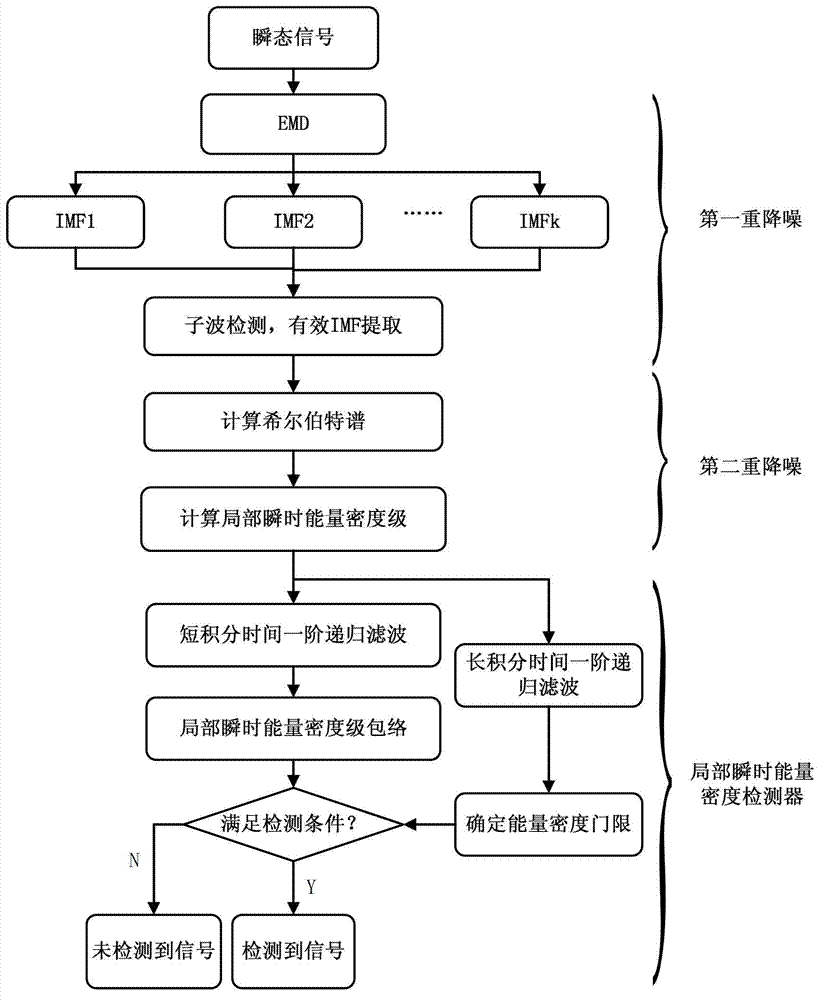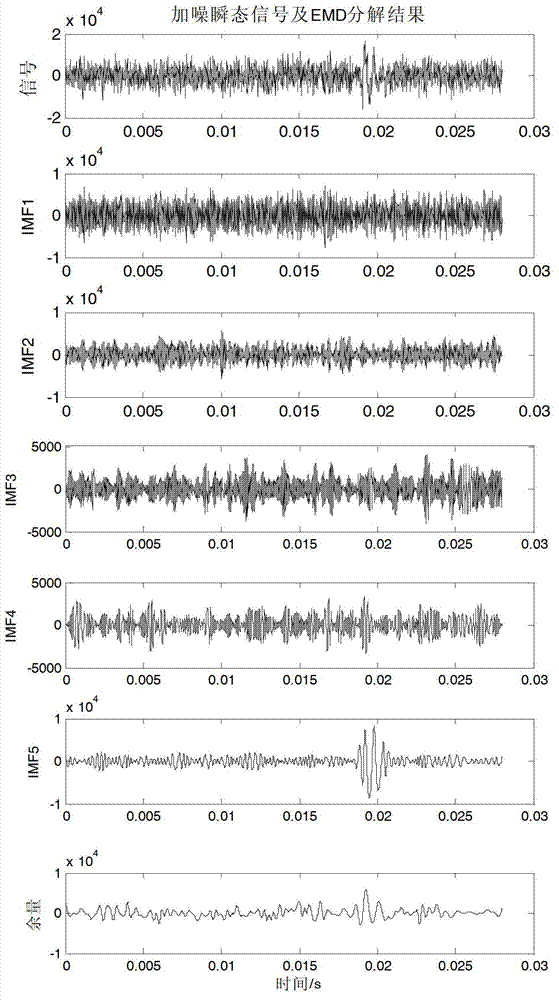Transient signal detection method based on Hilbert-Huang transform (HHT) double noise reduction
A transient signal and detection method technology, applied in transmission monitoring, speech analysis, instruments, etc., can solve the problems of high signal-to-noise ratio, broken time resolution, lack of adaptability of non-stationary signals, etc.
- Summary
- Abstract
- Description
- Claims
- Application Information
AI Technical Summary
Problems solved by technology
Method used
Image
Examples
Embodiment Construction
[0022] The present invention will be further described below in conjunction with accompanying drawing:
[0023] The transient signal detection process based on Hilbert-Huang (Hilbert-Huang) transform double noise reduction is as follows: figure 1 As shown, the main steps are:
[0024] (1) Initialize basic parameters, the basic parameters include: width threshold, empirical mode decomposition termination order, wavelet detection threshold multiple, energy density threshold multiple, frequency resolution coefficient, first-order recurrence coefficient.
[0025] Width threshold: W=1ms;
[0026] Termination order of empirical mode decomposition: K=5;
[0027] Wavelet detection threshold multiple: σ=4;
[0028] Energy density threshold multiple: T_times=9;
[0029] HHT frequency resolution coefficient: N=1000;
[0030] First-order recurrence coefficient: signal coefficient M1=50, threshold coefficient M2=2000.
[0031] (2) Adaptive noise reduction based on empirical mode deco...
PUM
 Login to View More
Login to View More Abstract
Description
Claims
Application Information
 Login to View More
Login to View More - R&D
- Intellectual Property
- Life Sciences
- Materials
- Tech Scout
- Unparalleled Data Quality
- Higher Quality Content
- 60% Fewer Hallucinations
Browse by: Latest US Patents, China's latest patents, Technical Efficacy Thesaurus, Application Domain, Technology Topic, Popular Technical Reports.
© 2025 PatSnap. All rights reserved.Legal|Privacy policy|Modern Slavery Act Transparency Statement|Sitemap|About US| Contact US: help@patsnap.com



